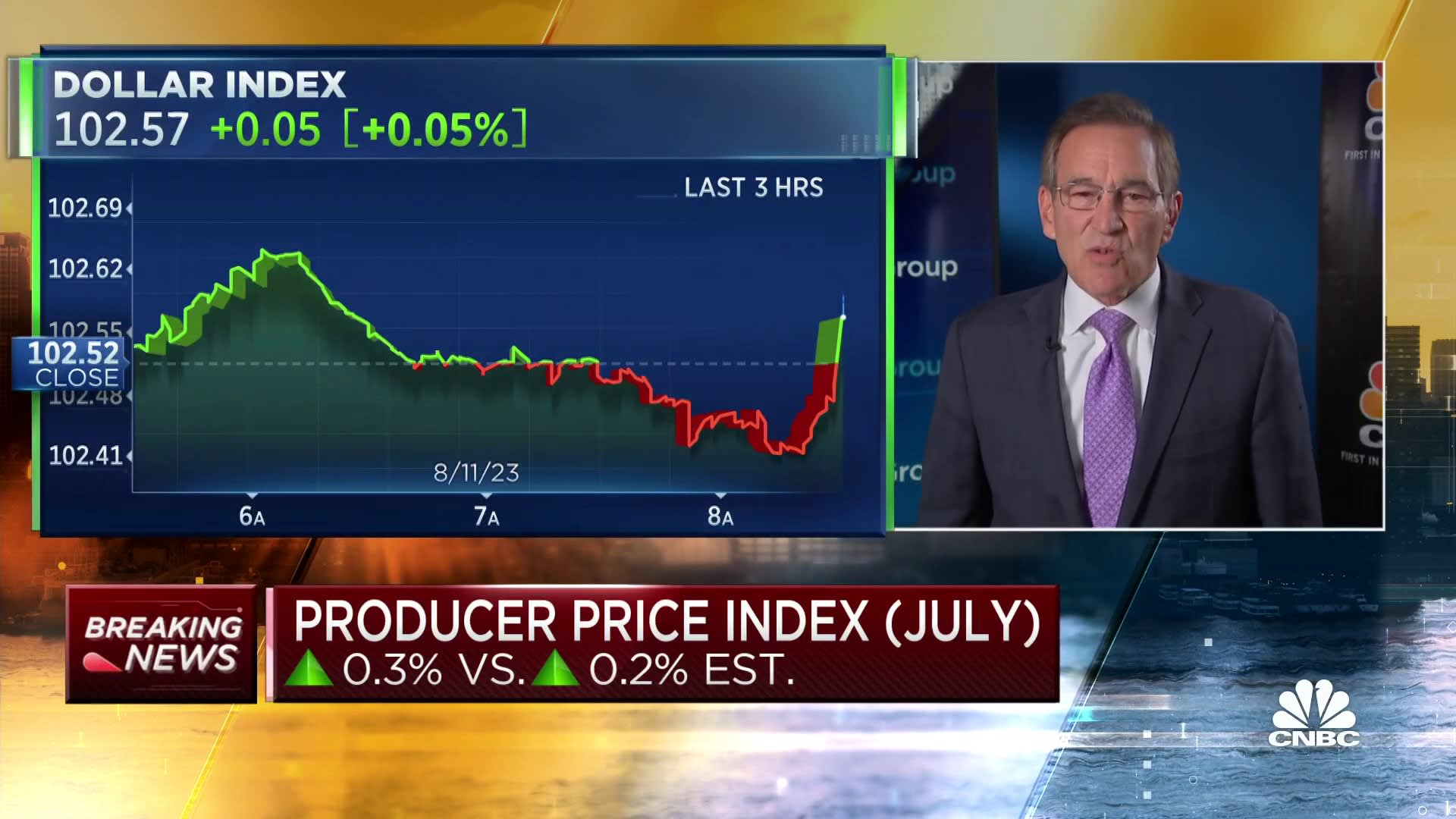
A measure of wholesale prices rose more than expected in July, countering recent trends showing that inflation pressures are easing.
The producer price index, which gauges the costs that goods and services producers receive for their products as opposed to those that consumers pay, rose 0.3% for the month, the Bureau of Labor Statistics reported Friday. That was the biggest monthly gain since January and up from a unchanged reading in June.
Excluding food and energy, core PPI also increased 0.3%, the biggest monthly increase since November 2022 after falling 0.1% in June. Core PPI rose 2.4% on a 12-month basis, tied for the lowest since January 2021.
Economists surveyed by Dow Jones had been expecting an increase of 0.2% for both readings. Excluding food, energy and trade services, PPI increased 0.2%.
On a year-over-year basis, headline PPI was up just 0.8%. Prices excluding food, energy and trade services moved up by 2.7% on an annual basis, unchanged from June.
Markets moved lower following the report, with futures tied to the Dow Jones Industrial Average down about 70 points. Treasury yields advanced, with the benchmark 10-year note last at 4.137%, up about 0.06 percentage points on the session.
Services costs pushed the index higher, rising 0.5% for the month, the largest gain since August 2022. Much of that came from a 7.6% surge in prices for portfolio management, which encompasses fees received for investment advice. In addition, there was a 0.7% jump in prices for trade services, along with a 0.5% increase in transportation and warehousing.
Goods prices rose just 0.1%, though food prices increased 0.5% while prices excluding food and energy were unchanged. Within the food category, meats surged 5%. Energy was a mixed bag: Costs for many gas fuels increased, but diesel declined by 7.1%.
The PPI release comes a day after the BLS reported that the more widely followed consumer price index also rose 0.2% for the month, both on the headline and core readings.
However, the 3.2% 12-month rate of change in the CPI was slightly less than economists had anticipated, bolstering the case for easing inflation.
Federal Reserve officials watch both measures closely. While the CPI often gets more attention, the wholesale price measure is seen as more of a leading indicator as it looks at pipeline costs for various products and services.
Policymakers have been debating how much further they need to push interest rates, following 11 increases totaling 5.25 percentage points since March 2022. In recent days, some officials have indicated the rate hikes could be at an end as inflation drifts back to the Fed’s 2% long-run goal.
Markets have assigned a near-certainty to the Fed skipping a rate hike at its September meeting.








